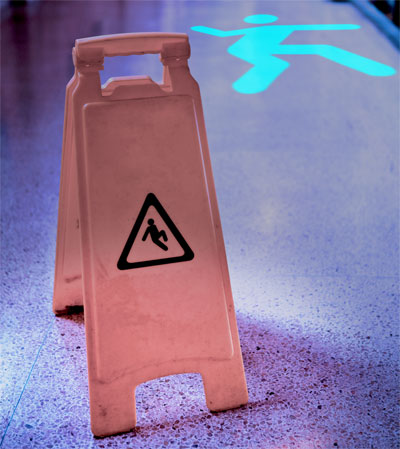
Visual cues are an important part of successful falls prevention strategies (Photo: UHN)
The nurses, doctors, patient care assistants and allied health professionals on unit 5A at the Toronto Western Hospital just saved a life.
In itself, that's not unusual at the University Health Network. What's different is how they did it.
In a typical month, there are about four falls on the unit, or about one a week. And falls can be deadly.
But on 5A they haven't had a single fall over the last five weeks. If that doesn't strike you as unusual, you should consider that the unit deals with patients suffering from spinal cord injuries. Every patient there has mobility issues and five weeks without a single fall is unprecedented for the team.
"After our rapid improvement event (RIE) in October, we changed the way we care for patients at a high risk for falling," says Myrna Fontanilla, registered nurse, 5A Fell. "We decided as a team that we would all take responsibility for every patient on the unit."
With physiotherapists, occupational therapists, the patient care coordinator, the nurse manager and all nurses accountable for completing falls risk assessments, patients are evaluated earlier and more frequently than when nurses alone were responsible for the patients.
"We use huddles and bullet rounds to communicate with each other about high risk patients every day," says Fontanilla. "We also designed a poster at the RIE that shows each patient's risk of falling as red, yellow or green. It's at the foot of every bed so you see it as soon as you walk into the room."
Since everyone knows which patients are high risk and have bed alarms that sound when the person attempts to get out of bed, everyone on the team can run straight to the patient's room when they hear it.
"The posters and alarms have helped," says Fontanilla. "But it's working together as a team that's made us successful."
